Radio, the Internet and the Mobile Phone
So, the mobile phone, in the guise of the smartphone (or "multimedia computer" as certain manufacturers would have you say), is revolutionising phone calls, e-mail and the web, and perhaps soon music and gaming too.
But is the smartphone now about to replace the oldest form of instant mass communication, broadcast radio, and in doing so turn it into something totally new?
Can you hear me, mother?
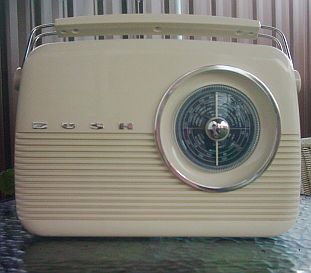
Radio allowed information to be transmitted instantly over long distances, including text, speech and even pictures. It transmitted from one place to the other either directly or through relays, through wires or wirelessly, and two people with radio transmitters could communicate with each other in most of the ways that we communicate now between two internet connections. It laid the foundations for the way communications networks would operate in the future, and spread into people's homes and around the world faster than any other communication device including the telephone.
The cheap electronics revolution of the 1970s saw a boom in Citizen Band and ham radios, where ordinary people were able to afford their own personal radio transmitters and talk to each other very much like internet chat rooms today, sometimes internationally. During the Falklands War in 1982 it was a radio ham that helped keep the British government up to date on conditions in the occupied parts of the islands, and astronauts on the Space Shuttle are still known to chat to radio hams on the ground below them.
Almost inevitably, packet-based networks such as the internet and mobile phones have now almost replaced conventional radio broadcasts, including most of the person-to-person communication, data transmission, and government communications. It's simply cheaper, easier and more flexible to use the newer network-based technologies, and conventional radio now just provides entertainment and information programmes on a few dozen local stations on the FM and AM bands, and international stations on the Shortwave and Longwave bands.
However, according to some people this is about to change. Conventional radio is fighting back with a range of digital formats, that use the same basic broadcasting idea as existing analogue radio but use digital signals instead of analogue ones. These new formats include the BBC-endorsed Digital Audio Broadcasting (DAB) system, which is designed to replace local and national radio, and the worldwide digital standard Digital Radio Mondiale (DRM), which is designed to replace international radio. These offer several strengths over normal radio including clearer reception, several times more stations to choose from, an automatically generated station menu, and data transmissions which can include small amounts of text and images. DAB is already available in Britain and some other European countries, while DRM is expected to start properly during 2007.
But are these new digital standards too little, too late? Will these last vestiges of traditional radio be swallowed up by enormous monsters such as the internet and the wireless networks?
Radio Is Dead, Long Live Internet Radio
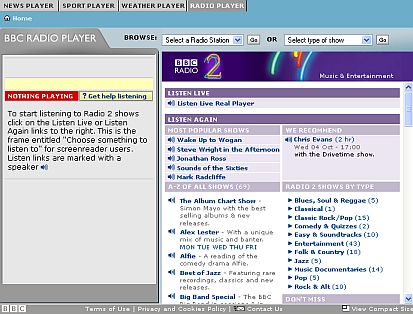 The greatest threat to conventional radio (both digital and analogue) is undoubtedly internet radio.
The greatest threat to conventional radio (both digital and analogue) is undoubtedly internet radio.
Internet radio can carry a virtually unlimited number of stations, and as well as live streams it can offer streams of recordings so people can catch a show they missed. For example, the BBC's Listen Again service is available on all their radio stations' websites, and provides recordings of most programmes for one week after they aired. Not only this, but the structure of the internet means that every radio station can operate worldwide at no extra cost, offering the listener not just a larger number of stations but a greater variety of languages and cultures. People who move round the globe can carry on listening to their local station wherever they are, as long as they can access the internet, and people who want to explore the world's stations can do so without leaving their PC.
The other big strength of Internet radio is that it's future proof, you can install almost any audio standard on your PC as soon as it becomes available, and internet radio stations can carry as many different streams as they want to suit all kinds of audio standards. This is possible because on the internet bandwidth is taken up by visitors, not content, whereas the situation on radio is exactly the opposite.
Because normal radio can't pull off this multiple-standards trick, the people who run it have to convince listeners to buy completely new radio sets every time the standards are upgraded. If you want to upgrade from an FM tuner to a DAB tuner, you have to buy a completely new DAB radio, and if DAB is ever upgraded it will require the purchase of yet another new radio. To make matters worse, there's only a limited number of standards that can fit in the radio broadcast spectrum, so if there are several competing upgrades (as is the case right now, with DAB and its rivals) the body in charge of allocating spectrum (usually the government) has to choose just one upgrade and hope they're betting on the right one.
Beyond just the pure audio, internet radio also offers the chance to interact with the station as internet connections are two-way, unlike radio broadcasts. Things like requests, polls, or even download purchases of currently playing tracks are all possible on internet radio, even if few internet stations currently implement these features.
But there's a problem: the easiest and most popular way to listen to internet radio is of course through your computer. You simply go to the station's web site and click on the relevant links to listen, or you can use a separate piece of software to display a list of stations to choose from. Unfortunately PCs, even laptops, are extremely clunky and unportable compared to normal radios, and portability is one of the things that has kept conventional radio alive in the age of the television. People listen to the radio while they're doing other things such as driving, cooking or walking, so any replacement for conventional radio would have to match this portability to stand a chance of succeeding.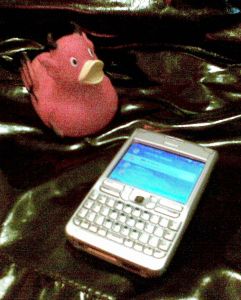 And this is where the mobile phone, especially the smartphone, comes into the picture...
And this is where the mobile phone, especially the smartphone, comes into the picture...
By listening to internet radio stations on an internet-enabled phone, either through Wi-Fi when near a hotspot or through the mobile phone network while outside a hotspot, you can get internet radio almost anywhere that you're likely to want it (at least in those parts of the world where phone network coverage is getting close to universal).
For many people the snag behind all this is the cost of accessing the internet through phone networks. Some network operators still use mobile internet charges seemingly from the Dark Ages, and listening to internet radio through these networks is the equivalent of watching your wallet smouldering on a fire. But the same used to be true of call charges when mobiles first appeared, and such phones were an executive toy not available to ordinary people. Eventually call charges came down dramatically as competition and technology wore away at the prices, and this same process of going from luxury to necessity is already happening to the mobile internet. In some countries you can already get uncapped unlimited mobile internet access for about $10 to $20 a month, or sometimes it's even included in the standard monthly contract charge. While prices are still too high for most people, that's clearly changing and won't be the case forever.
And of course if you intend using internet radio on a wi-fi enabled phone at hotspots, for example around the house or at free public access points, there are no internet charges at all.
Internet Radio on S60 3rd Edition phones through Wi-Fi & GPRS
So, how does this work in practice? Well, I tried out a couple of methods of getting internet radio on my Nokia E61
smartphone. There was no practical difference between using them with Wi-Fi and using them through the phone network with GPRS, the sound quality was perfectly good on both, although of course the GPRS quality (speed) may vary from phone network to phone network.
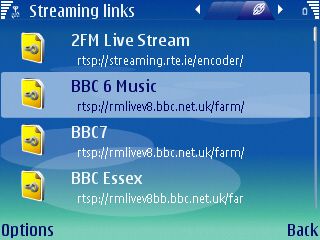 The first method was using the internet radio workaround detailed on the Eseries blog, and recently featured on All About Symbian.
The first method was using the internet radio workaround detailed on the Eseries blog, and recently featured on All About Symbian.
To use this method, you download a set of files which contain the Realaudio stream addresses of popular internet radio stations (links to the files are available on the blog page). You then connect your phone to your PC, and transfer the files into the C:/data/videos/ folder in the internal memory of the phone. After disconnecting your phone you open its Gallery application, select "Streaming Links", and you will see a list of internet radio stations. Just click on the station you want, and wait for the stream to start. You can set it to use either GPRS or Wi-Fi by opening the Realplayer application separately and choosing the appropriate access point in its "Settings" menu, or you can pick an access point the first time you use the "Streaming Links" menu.
It's an extremely simple method to use once you've downloaded the data files, but the data files will inevitably go out of date as stations move their streams to new URLs, so the various station links will gradually stop working and require new updated files to be downloaded periodically. What would be excellent is if there was some kind of third party application which could update the data files from a central server.
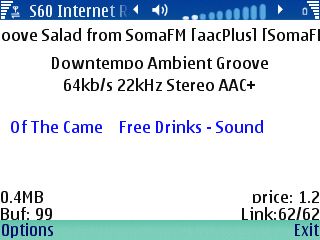 The second method uses Nokia's open source Internet Radio For S60 application, which uses the Shoutcast internet radio network as a source of stations. The application is compatible with most S60 2nd and 3rd Edition phones, and free to download. Developers can also download the source code if they wish.
The second method uses Nokia's open source Internet Radio For S60 application, which uses the Shoutcast internet radio network as a source of stations. The application is compatible with most S60 2nd and 3rd Edition phones, and free to download. Developers can also download the source code if they wish.
To use this method, just download, install and run the appropriate SIS files from the Internet Radio For S60 link above. You can choose which station to listen to from the application's built-in playlist, and there are instructions on the web site on how to create and add your own playlist files with more stations. You can choose a GPRS or Wi-Fi access point each time you connect to a station.
In practice this application is almost identical to use as the Realplayer method above, except that the streams are in non-Real formats, and it provides more information about the station and track being listened to. The same problem of having to manually update the station lists remains however.
Come Together...
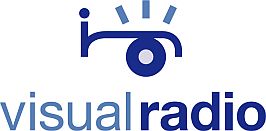 But perhaps the battle between normal radio and packet networks doesn't have to be a battle at all. Perhaps by combining the best of radio, the internet and phones, something greater than the sum of its parts can be created?
But perhaps the battle between normal radio and packet networks doesn't have to be a battle at all. Perhaps by combining the best of radio, the internet and phones, something greater than the sum of its parts can be created?
This at least is the theory behind Visual Radio, a joint venture from Nokia and HP that uses a conventional FM radio tuner married to a phone's mobile internet connection in order to add interactive services to existing radio stations. Listening to VR stations is just like listening to non-VR stations because they're received on the same FM tuner, but the VR stations also offer a images, competitions and music downloads through an internet feed synchronised to the music being played by the station. If the station is playing a particular track you see the name of the track on the screen, information about the artist, and perhaps a link to a web site where you can buy the track as a download.
This last point, offering you the chance to instantly buy music you're listening to, is where Visual Radio's greatest potential lies, because surely the ultimate in impulse purchasing is being able to buy a great track as soon as you hear it. This would take VR-compatible devices beyond the archiving of people's collections that normal music players deal with, and make listening to the radio more like a shopping trip than just audio wallpaper.
Providing the price of such downloads was right, selling of tracks through VR (or something like VR, or even pure internet radio) could totally revolutionise radio both for the listeners and the broadcasters.
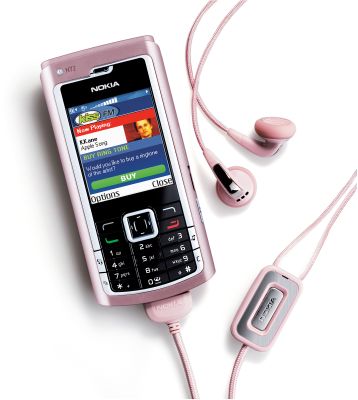 It would let listeners use radio stations as a tool to explore music in a way that is impossible on other devices, they'd have their favourite DJ guiding them through a world of music they don't have time to sift through themselves. The internet has put a lot of music at people's finger tips, but that is its own curse: without a guide to music, such as a good DJ, you can get lost trying to find what you want. (Nokia seemed to push a similar line to this at their recent launch of the N95 and the new music edition models, although they talked more about directly recommending new tracks to people rather than letting established radio stations do so.)
It would let listeners use radio stations as a tool to explore music in a way that is impossible on other devices, they'd have their favourite DJ guiding them through a world of music they don't have time to sift through themselves. The internet has put a lot of music at people's finger tips, but that is its own curse: without a guide to music, such as a good DJ, you can get lost trying to find what you want. (Nokia seemed to push a similar line to this at their recent launch of the N95 and the new music edition models, although they talked more about directly recommending new tracks to people rather than letting established radio stations do so.)
And if the stations got a share of the purchase price from selling tracks as impulse purchases, this would give them an incentive to play a lot more new music, as larger playlists would offer more tracks to buy. Stations would put a lot more thought into the music they play, and it might even lead to an increase in the quality of music as they try to entice people into clicking on the "buy" button. It would also allow make them a lot more influential in the music business as they'd be frontline retailers rather than just promoters.
Only a tiny number of stations around the world have signed up to Visual Radio's interactive services so far, and it remains to be seen whether this will ever establish itself as a widely used standard. However, it's worth noting that Nokia has only just begun including Visual Radio in its handsets on a large scale, so it may be too early to judge the impact of the service. They are now available not just in their smartphones but normal phones too, and most of their latest handsets with FM radios are Visual Radio compatible.
Putting aside the interactive services, there is another side to Visual Radio which is already well-established, and which is immensely useful: the station directory. You simply tell the Visual Radio software where you are in the world, by country, region and city, and it will show you a list of all the available FM stations there, drawn from its online database. You then cherry pick the stations that interest you, and it adds them to your radio's preset list, saving you an awful lot of bother with having to manually try and find stations. One possible improvement in this might be a short description of the stations, as the names alone often aren't enough to judge them by.
Digital Radio on Phones
There are also plans by various manufacturers to integrate digital radio tuners such as DAB into phones, in the same way as analogue FM tuners. This is partly driven by the possibility of using DAB as a mobile television standard, but it should be noted that the two largest handset manufacturers, Nokia and Motorola, are backing a rival television-only standard called DVB-H instead.
Standards for digital radio have become horribly splintered, DAB has been passed over by most of the world and a raft of incompatible rival standards are being considered by those who've rejected DAB. The splintering of standards also means the manufacturing costs of digital radios are much higher than analogue radios, as the production runs for each digital radio standard will always be much smaller than for the analogue FM/AM tuners used worldwide.
Hardware manufacturers don't currently know which digital standard to adopt, if any, and it may be that no global standard ever emerges. If internet radio takes off quickly enough it may be that digital radio receivers never replace analogue, with most people leapfrogging digital radio completely.
And now, the shipping forecast...
So, will normal radio give way to internet radio?
Most of it probably will, eventually. Internet radio already offers vastly more choice and flexibility, its sound quality improves all the time while normal radio's stands still, and the price of internet access (both at home and on the move) is constantly falling. Thanks to the combination of fast internet connections and processing power on smartphones it has become portable. In a decade or two's time there will be very few (if any) reasons to choose normal radio instead of the internet variety, and stop-gap services like DAB and Visual Radio probably won't be needed, at least in their current form.
If internet radio does become established, and it uses the a Visual Radio-style track selling system, it could turn radio from a passive activity into a trip through new music, a mixture of exploration and shopping. DJs and their choice of music would become more important than ever.
But before we assume that radio broadcasting is doomed, it's worth remembering what all governments tell you to do in the event of a major disaster: switch on your radio. The reason for this is that conventional radio transmissions are by far the easiest way to communicate with a population even in areas of almost total destruction. Listeners only need a battery-powered radio (or no batteries at all if it's a wind-up clockwork model), and as many pirate stations continue to prove daily, the transmission equipment is also incredibly cheap, easy to make, and easy to set up in a new location.
So enjoy internet radio and all the new experiences it opens up to you, but be sure to take care of your faithful old-fashioned radio too, because it might literally save your life one day.
Number Stations
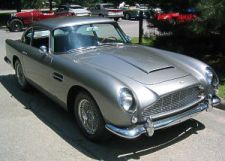 Actually, there's one other reason why governments might be reluctant to give up broadcast radio.
Actually, there's one other reason why governments might be reluctant to give up broadcast radio.
Those of you familiar with the TV series Lost may be surprised to learn that there really are mysterious radio stations out there which transmit strings of apparently random numbers day after day, week after week, year after year, decade after decade.
These are the Number Stations, which usually broadcast at fixed frequencies on fixed schedules, often starting with a piece of music followed by a long string of digits or letters, sometimes even read by a child. As if that wasn't spooky enough, no one is quite sure who is responsible for them, and anyone can hear the broadcasts just by using an ordinary shortwave radio. The schedules of these mysterious stations are posted all over the internet, along with samples of what they sound like.
Many theories have been put forward to explain them, but it's extremely likely that governments are behind the broadcasts, using the codes as an untraceable method of sending messages to their spies in the field. The spies that listen are thought to decode the numbers into text using one time pads, which use a throwaway encryption key for each message as long as the text being decoded. This makes them mathematically impossible to decode, so despite the numbers being audible to anyone in the world, only one person is able to make any sense of them, and that person is completely untraceable because they could be literally anyone with an ordinary shortwave radio.
One such station called The Lincolnshire Poacher (because of an English folk tune it plays before each transmission) was recently traced by journalists to a British military base in Cyprus. This would put it within range of the entire Middle East, a particularly likely place for spies to be active these days.
